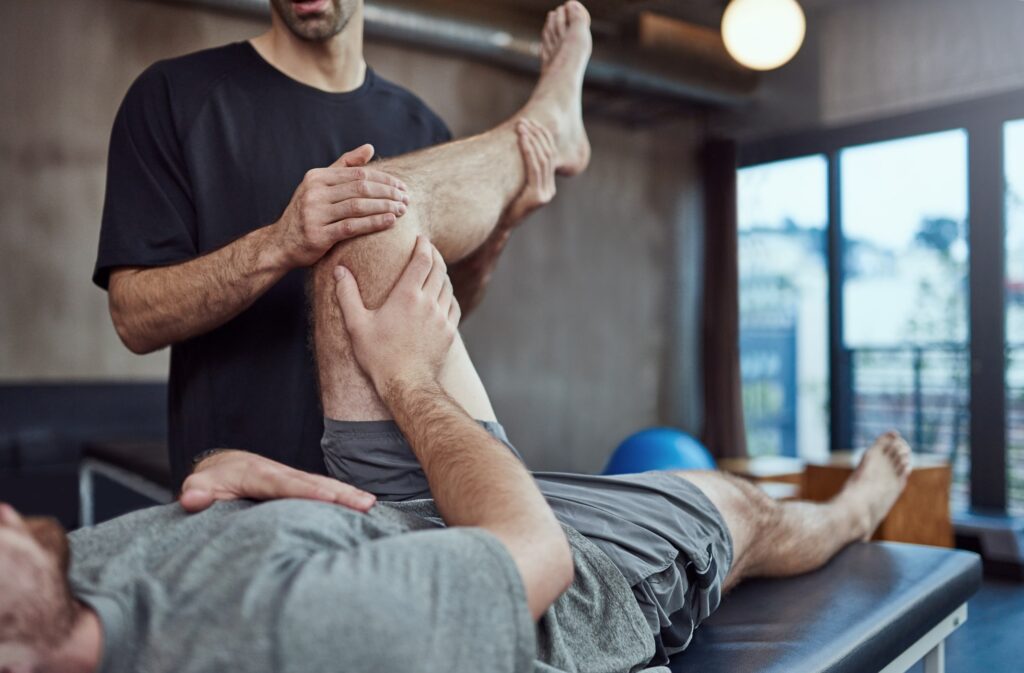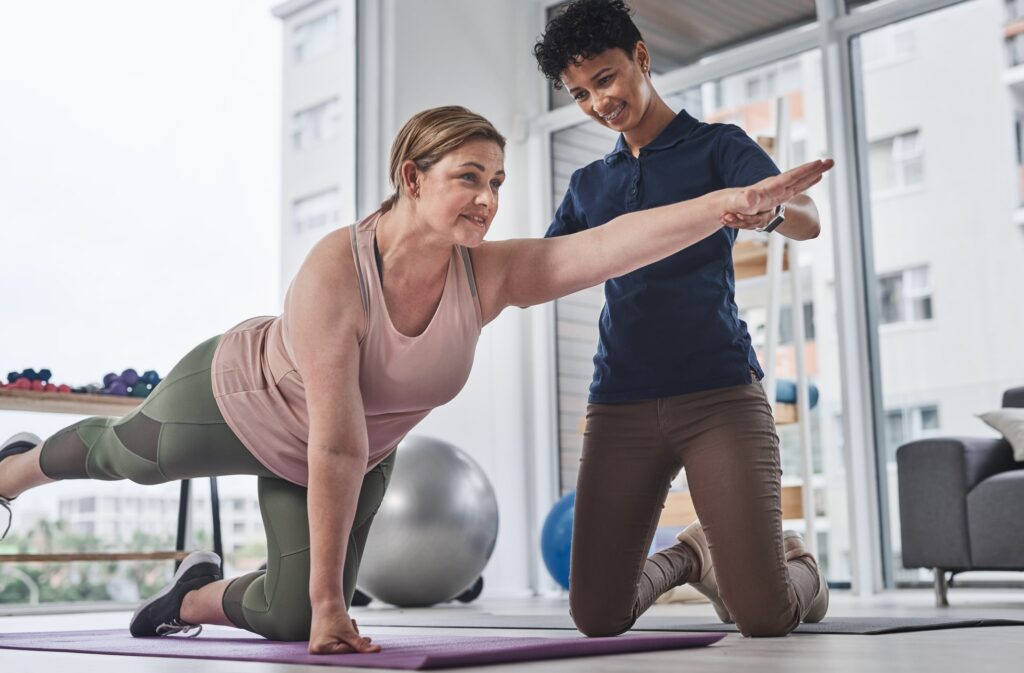When preparing for a physiotherapy session, choosing the right attire is as crucial as the therapy itself. The clothes you wear can significantly impact the effectiveness of your treatment. Dressing appropriately not only ensures comfort during the session but also facilitates easier movement, allowing therapists to work more efficiently on your recovery.
At Get Moving Physio, we offer quality physiotherapy services in Bolton, and we’re here to help anyone seeking physiotherapy decide on the best attire for your session. Keep reading below for more information or to arrange an appointment with us; please don’t hesitate to get in touch with us now!
Considerations For Physiotherapy Attire
Let’s explore the essential elements of ideal physiotherapy attire: comfort, flexibility, and the right fabric choices:
Comfort: Comfort is key in physiotherapy. You need clothing that doesn’t restrict your movement or cause discomfort.
Flexibility: Your clothes should allow for a full range of motion. Opt for stretchable fabrics that move with your body.
Fabric Choices: Breathable fabrics like cotton or moisture-wicking materials are ideal to keep you cool and comfortable.
Prioritising comfort, flexibility, and suitable fabrics will not only enhance your comfort during sessions but also contribute positively to your therapeutic progress. Remember, the goal is to wear something that feels as good as it functions, supporting you every step of the way in your physiotherapy journey.

Recommended Attire for Different Types of Physiotherapy
Selecting the right clothing for your physiotherapy sessions is not just about comfort; it’s also about ensuring that your attire is well-suited to the type of therapy you will be undergoing. Different types of physiotherapy may require different styles of clothing, each designed to facilitate the specific exercises and treatments involved.
General Physiotherapy Sessions:
When attending general physiotherapy sessions, the key is to wear something that allows for unrestricted movement. Loose-fitting, stretchable pants or shorts paired with a comfortable t-shirt typically make the best choice. This type of attire accommodates a wide range of physical activities, from stretching to strength exercises, ensuring you can move freely without any discomfort. Women may prefer leggings or yoga pants, which offer both comfort and flexibility.
Do’s and Don’ts: Clothing Tips for Your Physiotherapy Session
Embarking on a physiotherapy journey involves not just commitment and patience, but also the right attire to ensure comfort and effectiveness during each session. Selecting appropriate clothing for your physiotherapy appointments is crucial as it can significantly impact your ability to participate in exercises and treatments.
Do’s:
- Wear layers for easy removal and adaptation to different exercises.
- Choose supportive footwear, especially for exercises that require standing or walking.
Don’ts:
- Avoid tight-fitting clothes that restrict movement.
- Steer clear of heavy fabrics that can make you uncomfortably warm.
The clothing you choose for your physiotherapy sessions plays a pivotal role in your comfort and the effectiveness of the exercises. By adhering to these simple do’s and don’ts, you can ensure that your attire supports your therapy goals. Remember, the right clothing not only aids in your physical movements but also boosts your confidence and motivation, making your physiotherapy journey smoother and more productive.

Specialised Treatments:
The nature of your physiotherapy treatment can greatly influence your clothing choices. For instance, if you’re undergoing aquatic therapy, which involves exercises in a pool, a well-fitting swimsuit is essential. Remember to bring a towel, and if needed, a robe for your comfort before and after the session. On the other hand, manual therapy, such as massage or joint mobilisation, requires clothing that provides easy access to the affected area. If your therapy focuses on the lower body, shorts would be appropriate. For upper body treatments, a tank top or a loose-fitting shirt can be suitable.
Post-Surgical Rehabilitation:
Post-surgical rehabilitation often requires special consideration when it comes to clothing. It’s important to wear attire that doesn’t press against or irritate surgical sites or wounds. Soft, loose-fitting clothing that can be easily put on and taken off is ideal, especially if you’re dealing with limited mobility. For surgeries involving the lower body, like knee or hip replacements, consider wearing pants with a drawstring waist or those that can be easily rolled up. For upper body surgeries, shirts with buttons or wide neck openings can be more convenient than pullovers.
Reach out to Get Moving Physio for more information!
To find out more, or to arrange our expert physiotherapy services for yourself, please don’t hesitate to get in touch with Get Moving Physio today! We offer fall prevention therapy, frailty therapy, and sports therapy, so we’re sure to have the service for you! Looking for more information? Check out our blog! It’s full of useful information, like The Benefits of Physiotherapy and more!







